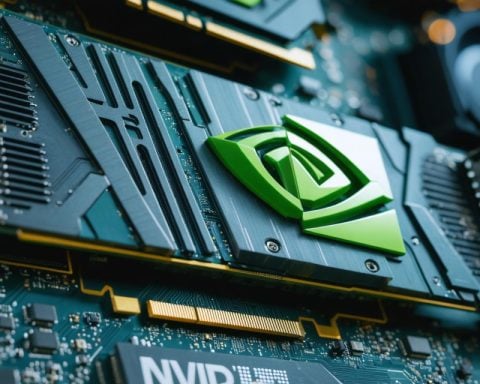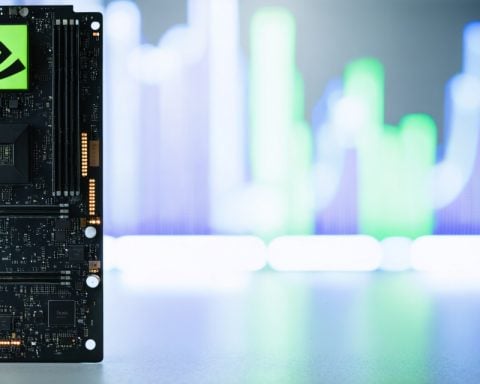- The lithium industry witnesses a major transformation as FMC Corporation’s former lithium division evolves into Arcadium Lithium following its merger with Allkem.
- Rio Tinto plans to acquire Arcadium Lithium for $6.7 billion, signaling a strategic move to dominate the lithium market.
- The creation of “Rio Tinto Lithium” marks the company’s shift from traditional mining operations to focus on becoming a global leader in lithium production.
- Rio Tinto’s acquisition and strategy aim to capitalize on growing lithium demand, despite currently mixed financial performance indicators.
- With a strong market cap and a 7.1% dividend yield, Rio Tinto presents an attractive investment opportunity amid potential lithium market growth.
- The company’s strategic focus on lithium could significantly reshape market dynamics and enhance its investment appeal.
A seismic shift echoes through the world of lithium investment as the dust settles after FMC Corporation’s strategic pivot away from its lithium roots. Once a stalwart in the industry, FMC transitioned its focus years ago, leaving questions about the future of its once-vaunted lithium division. That division forged a new path as Livent Corporation and recently merged with Allkem to form Arcadium Lithium, a tale of renewal and ambition for lithium’s future.
Meanwhile, the spotlight turns to Rio Tinto, as this mining behemoth readies to finish acquiring Arcadium for a staggering $6.7 billion. With this acquisition, Rio Tinto seeks to carve a powerful niche in the burgeoning lithium market, eyeing a commanding role in the lithium value chain as it transcends its core focus on iron and aluminum mining.
Rio Tinto’s formation of a dedicated “Rio Tinto Lithium” division heralds its intent to stake its claim as a global leader in lithium production. While Rio’s overall prospects—currently marred by mediocre free cash flow relative to income—seem to favor caution, its strategic foresight could reshape market dynamics. A resurgent lithium price, as Rio hopes, might just transform this division into a juggernaut within the company’s portfolio.
Investors might find Rio Tinto’s offer enticing. A robust market cap coupled with a generous 7.1% dividend yield sweetens the deal, promising a steady cash flow while you anticipate a potential lithium boom. If Rio Tinto’s strategic bets pan out, the once-overshadowed miner could become a cornerstone of lithium investment—proof that sometimes, the dark horse charges fastest toward the finish line.
The Lithium Revolution: What Rio Tinto’s Strategic Shift Means for Investors
How-To Steps & Life Hacks in Lithium Investing
1. Diverse Portfolio Management: Balance your portfolio with a mix of traditional mining stocks and emerging green technology, such as lithium, to hedge against volatility.
2. Research Emerging Markets: Investigate growing markets in EV technology and renewable energy storage, sectors driving lithium demand.
3. Monitor Industry Indicators: Keep an eye on lithium price trends, mining production reports, and government policy changes as they affect industry dynamics significantly.
Real-World Use Cases of Lithium
Lithium is crucial in:
– Electric Vehicles (EVs): It powers lithium-ion batteries for leading EV brands like Tesla and Nissan.
– Renewable Energy Storage: Supports solar and wind farms by storing energy in off-peak times.
– Consumer Electronics: Used extensively in smartphones, laptops, and other portable devices.
Market Forecasts & Industry Trends
The lithium market is projected to grow significantly, driven by rising EV adoption and renewable energy storage solutions. According to Allied Market Research, the global lithium-ion battery market size was valued at $36.7 billion in 2019 and is expected to reach $129.3 billion by 2027.
Reviews & Comparisons
– Rio Tinto vs. Albemarle: While Rio Tinto is entering lithium with a diversified mining portfolio, Albemarle remains a dedicated leader focused on lithium, offering different risk profiles.
– Livent and Allkem Merger: This merger forms a formidable entity in the lithium mining sector, positioning itself as a direct competitor to existing players like SQM and Tianqi Lithium.
Controversies & Limitations
– Environmental Concerns: Lithium mining can significantly impact local ecosystems and water supplies.
– Market Volatility: The lithium market is prone to sharp fluctuations based on demand and technological advancements.
Features, Specs & Pricing
– Arcadium Lithium: Created from the merger of Livent and Allkem, this new entity presumably combines expertise and operational strength from both companies.
– Rio Tinto’s Investment in Lithium: Valued at $6.7 billion, this acquisition signifies its strong commitment to establishing a leadership position in the lithium industry.
Security & Sustainability
– Sustainable Practices: Lithium extraction requires innovations to reduce environmental footprints. Companies increasingly invest in technologies and practices to enhance sustainability.
Insights & Predictions
– The demand for lithium will likely outpace supply in the near term, potentially driving prices higher.
– Miner diversification, such as Rio Tinto’s move, indicates confidence in long-term lithium demand.
Tutorials & Compatibility
While beyond typical individual investment strategies, tutorials on assessing risk, reading financial statements, and understanding industry forecasts can significantly benefit investors.
Pros & Cons Overview
Pros:
– Potential for high returns due to lithium market growth.
– Complements Rio Tinto’s diversified portfolio, reducing overall company risk.
Cons:
– High environmental and geopolitical risks.
– Price volatility affects predictability.
Actionable Recommendations
– Stay Informed: Regularly follow lithium market news and reports.
– Strategic Investments: Consider both established and emerging lithium players for a balanced approach.
– Long-Term Perspective: Position for the long-term growth aligning with global shifts towards renewable energy and EVs.
For a deeper dive into the mining and resources sector, visit Rio Tinto.
These insights can help navigate the opportunities and challenges in the dynamic lithium investment landscape.














